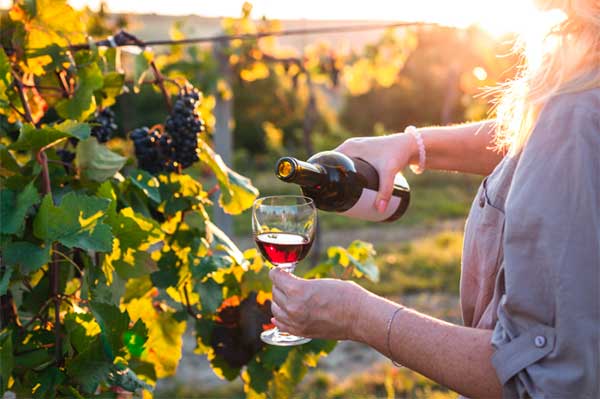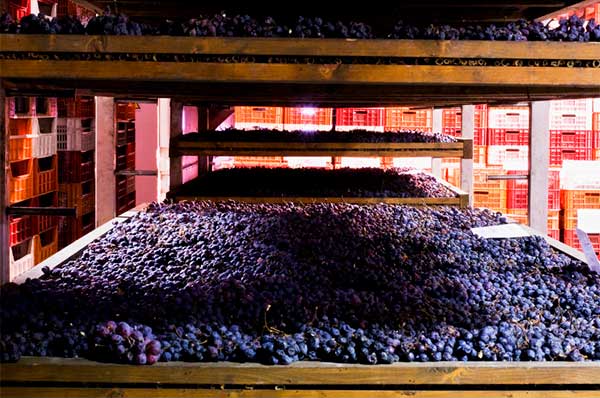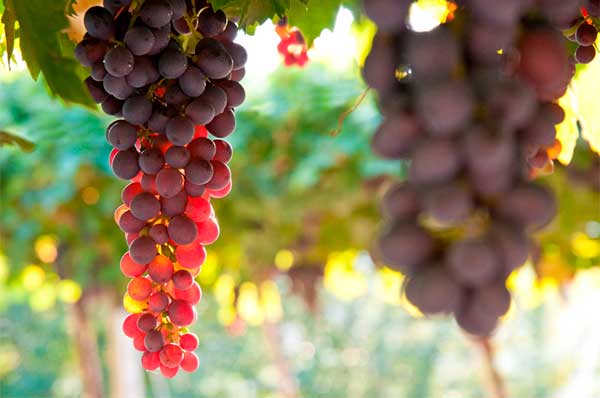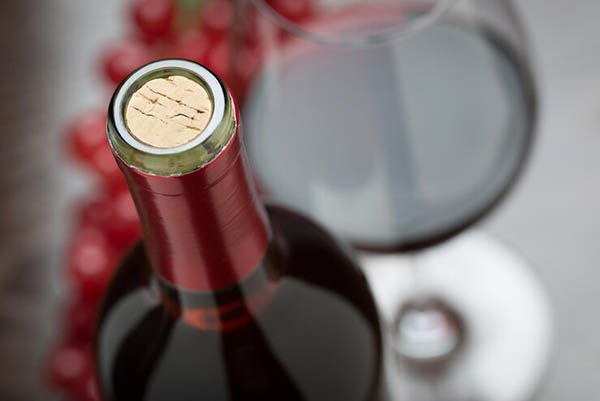Introduction
Valpolicella, a name that resonates with the rich history of Italian winemaking, offers a journey through a landscape filled with vinicultural marvels. This article unfolds the story of Valpolicella, exploring its region, climate, distinct wines, and the grape varieties that contribute to its unique character.
1. The Wine Region and the Homonymous Wine

A Storied Past: Valpolicella, nestled in the northeastern part of Italy’s Veneto region, boasts a winemaking tradition that dates back to Ancient Greece. This area, celebrated for its premium wines like Amarone, has been a center of viticulture since the era of the Italian Ostrogoths, with its wines once traversing through the bustling ports of Venice during the height of the Republic.
Geographical Splendor: The Valpolicella region is characterized by its diverse geography, comprising three subzones: the historic Classica zone, Valpantena, and Eastern Valpolicella. The Classica zone, revered for its terraced vineyards along the Monti Lessini foothills, forms the heart of Valpolicella’s winegrowing terroir. This region enjoys a mild to cool continental climate, influenced significantly by its proximity to Lake Garda and the Adriatic Sea. The cooler areas, found in the Monti Lessini foothills, benefit from alpine winds, contributing to the distinct climate that shapes the character of Valpolicella wines.
Resilience Through Time: Despite facing challenges such as the phylloxera epidemic and the political upheaval during the Risorgimento, this wine emerged relatively unscathed in the 19th century, thanks to the resilience of its winemakers and the adaptability of its vineyards. The rediscovery of the Amarone style in the 1950s and the subsequent DOC recognition in 1968 marked a turning point, leading to an expansion of the vineyard areas. However, it was the spike in Amarone’s popularity in the late 20th century that truly revitalized the region’s winemaking, prompting a shift back towards quality-focused vineyard practices.
A Tapestry of Terroirs: the vineyards unfold across a landscape that transitions from morainic gravel near Lake Garda to dolomite and alluvial soils towards the plains. The most favored vineyards are perched in the Monti Lessini foothills, benefiting from altitudes that promote optimal grape ripening. The region’s diverse soils and microclimates contribute to the variety of wine styles Valpolicella is famous for, from light, refreshing reds to the deep, complex profiles of Amarone and Recioto.
Valpolicella’s story is one of tradition, innovation, and resilience. As we delve deeper into the aspects that make this region a cornerstone of Italian viticulture, we uncover the intricate dance of climate, grape varieties, and human expertise that culminates in the production of some of the world’s most cherished wines.
2. Climate and Characteristics of the Region
The Influence of Water Bodies: The climate in Valpolicella is profoundly influenced by its geographical positioning near two significant bodies of water: Lake Garda to the west and the Adriatic Sea to the southeast. These water bodies play a crucial role in moderating the climate, contributing to the mild to cool continental weather patterns that prevail across the region.
Cool Winds and Diverse Microclimates: The coolest parts of Valpolicella are found in the Monti Lessini foothills to the north, where cool alpine winds from the Alps blow southward. This area, known as the Classico zone, enjoys a distinct microclimate that is essential for the cultivation of grapes that produce the region’s renowned wines. As one moves south and east, the climate warms, transitioning to the fertile plains of the Adige river, where a different set of viticultural challenges and opportunities arises.
Temperature and Rainfall: The growing season in Valpolicella sees a mean temperature around 74.5°F (23.6°C), with average rainfall approximately 34 inches (860 mm). This climate, combined with the region’s unique topography, allows for the successful cultivation of a variety of grape types, each contributing to the distinct profiles of Valpolicella wines.
Soil Composition: The soils in the region range from morainic gravel in the areas closer to Lake Garda to dolomite residual gravel and alluvial deposits across the central plains. Towards the east, near the Soave DOC, volcanic soils add another layer of complexity to the terroir. The diversity in soil types, along with the region’s climate, forms a mosaic of terroirs capable of supporting a wide array of grape varieties. The most favorably situated vineyards, particularly those in the Monti Lessini foothills within the Classico zone, benefit from altitudes between 490 to 1,500 feet (150–460 meters), promoting the cultivation of grapes that are ideal for premium wine production.
A Balancing Act of Nature: Valpolicella’s climate and terroir are a testament to the delicate balance between nature and the art of viticulture. The region’s winegrowers have harnessed these natural advantages to produce wines that reflect the essence of their environment. The interplay of cool winds, moderated temperatures, diverse soil types, and strategic vineyard placements contributes to the creation of wines that are celebrated globally for their quality and complexity.
The climate and characteristics of the Valpolicella region form the backbone of its viticultural success. By understanding and adapting to these natural conditions, winemakers in Valpolicella have been able to craft wines that are not only a reflection of their environment but also stand as symbols of Italian winemaking heritage. As we delve further into the specifics of Valpolicella wines and the grapes that give them life, the importance of this unique climate and terrain becomes ever more apparent.
3. Wine, Production Time, and Storage

Valpolicella wines are celebrated for their wide range of styles, from the light and fruity Valpolicella Classico to the deeply complex and age-worthy Amarone della Valpolicella. The production time and storage techniques play crucial roles in developing the distinct profiles of these wines.
The Making of Valpolicella: Traditional Valpolicella wines are made using a blend of local grape varieties, primarily Corvina, Rondinella, and to a lesser extent, Molinara. The grapes are harvested in the late summer and early autumn, then fermented to produce a light-bodied, fruity wine that is emblematic of the Valpolicella style. This wine can be released shortly after fermentation, often within a year, to preserve its fresh and vibrant character.
Amarone and Recioto: The production of Amarone and Recioto della Valpolicella represents a departure from this method, utilizing a process known as “appassimento.” Grapes destined for these wines are left to dry for several months, concentrating their sugars and flavors. This process extends the production time significantly, as the grapes are not even pressed until they have undergone this drying phase. After fermentation, Amarone is aged in barrels for a minimum of two years, though many producers opt for longer aging periods to enhance complexity. In contrast, Recioto, being a sweet wine, has its fermentation halted early to retain residual sugar.
Storage and Aging Potential: Valpolicella wines vary widely in their aging potential. Basic Valpolicella is best consumed young, within a few years of bottling, to enjoy its fruity qualities. On the other hand, Amarone della Valpolicella is renowned for its aging potential, with many wines improving over a decade or more in the bottle. Proper storage is crucial for these wines, with conditions that include consistent temperature, humidity control, and protection from light and vibration. This careful storage ensures that the wines develop their full range of flavors and aromas over time.
The nuanced process of creating Valpolicella wines, from the careful selection of grapes through to the meticulous aging and storage, showcases the dedication of the region’s winemakers to producing a diverse portfolio of high-quality wines. Each style, whether designed for immediate enjoyment or for long-term aging, reflects the unique character and tradition of the Valpolicella region.
4. Grape Varieties

The Valpolicella blend is primarily composed of three key grape varieties, each contributing unique characteristics that define the region’s distinctive wines. Here’s a closer look at each of these varieties and a couple of less common but significant grapes in the blend.
1st – Corvina: Corvina is the backbone of Valpolicella wines, accounting for 45-95% of the blend. It is prized for its rich color, moderate tannins, and flavors that range from cherry to chocolate, particularly in the production of Amarone and Ripasso wines. Corvina provides the wines with body and structure, and its ability to dry well makes it ideal for the appassimento process, critical for producing Amarone and Recioto wines.
2nd – Corvinone: Although similar in name and once thought to be a clone of Corvina, Corvinone is a distinct variety. It can substitute for up to 50% of the Corvina in the blend, contributing structure, tannin, and darker fruit flavors to the wines. Corvinone’s large berries and thick skins are particularly suited to the drying process, enhancing the concentration and complexity of Amarone and Recioto wines.
3rd – Rondinella: Rondinella makes up 5-30% of the blend, adding vibrant color and herbal, floral notes to the wine. Its resilience to disease and consistent yields make it a reliable grape for producers. Rondinella’s lighter flavors and lower tannins complement the more intense characteristics of Corvina and Corvinone, contributing to the balance and drinkability of Valpolicella wines.
4th – Molinara: Once a staple in the Valpolicella blend, Molinara’s presence has diminished due to its tendency to produce lighter, more acidic wines. Though it is no longer mandatory in the DOC regulations, some producers continue to use Molinara for its fresh acidity and floral notes, which can add brightness and lift to the wines.
5th – Oseleta: A lesser-known variety, Oseleta is being revived by some producers for its deep color and robust tannins. It is often used in small quantities to add depth and complexity to the blend, particularly in premium wines. Oseleta contributes to the longevity and aging potential of Valpolicella wines, adding another layer of flavor and structure.
These grape varieties, with their distinct flavors and characteristics, are blended in varying proportions to create the diverse range of wines that Valpolicella is famous for. From the light and fruity Valpolicella Classico to the rich and complex Amarone, the interplay of these grapes underlies the unique appeal of the region’s wines.
5. Valpolicella Wines

The Valpolicella region produces a variety of wines that range from light and refreshing to rich and complex. These wines showcase the versatility of the region’s grape varieties and the skill of its winemakers.
1st – Classico: This is the most traditional form of Valpolicella wine, made from grapes grown in the original ‘Classico’ zone. It’s known for its bright, tangy flavors of cherry and other red fruits, often with a hint of almond. Valpolicella Classico is typically light-bodied and can be enjoyed young. It’s perfect for a warm summer day and can even be served slightly chilled.
2nd – Amarone della Valpolicella: Amarone is one of Italy’s most prestigious wines, made using the appassimento method where grapes are dried for several months before fermentation. This process concentrates the sugars and flavors, resulting in a full-bodied, rich wine with a potent alcohol content. Amarone features flavors of dried fruit, tobacco, and spices, and it has significant aging potential.
3rd – Ripasso: Ripasso is a unique style of wine that is sometimes referred to as “baby Amarone.” It is made by fermenting standard Valpolicella wine with the grape skins and lees left over from the production of Amarone. This adds body, flavor, and alcohol to the wine, creating a richer, more complex product than standard Valpolicella but not as intense as Amarone. Ripasso has become increasingly popular for its balance of flavor, body, and value.
4th – Recioto: Recioto della Valpolicella is a sweet dessert wine that shares the appassimento method with Amarone but differs in the fermentation process, which is stopped early to retain a significant amount of residual sugar. This wine is rich and velvety, with flavors of cherry, fig, and spices. Recioto is a historic style of wine in the region, showcasing the ancient winemaking tradition of drying grapes to concentrate their sweetness and flavor.
Each of these wines embodies the tradition, innovation, and variety that Valpolicella is known for. From the light and refreshing Valpolicella Classico to the rich and complex Amarone, the region offers wines for every palate and occasion, making it a beloved part of Italy’s viticultural landscape.
6. Conclusion
Valpolicella stands as a testament to Italy’s rich winemaking heritage, offering a diverse array of wines that captivate the palate and tell the story of their origin. From the light and vibrant Valpolicella Classico to the deep and contemplative Amarone della Valpolicella, each wine is a window into the region’s soul, reflecting its climate, soil, tradition, and the meticulous care of its vintners.
The journey through Valpolicella is not just about tasting wine; it’s about experiencing the confluence of history, culture, and innovation that defines this unique winemaking region. The dedication to quality, from the selection of grape varieties like Corvina, Rondinella, and Molinara to the adoption of ancient and modern vinification techniques, underscores a commitment to excellence that has brought global acclaim to Valpolicella wines.
As we’ve explored the various facets of Valpolicella, from its geographical diversity and climatic conditions to the intricate processes behind each wine style, it becomes clear that Valpolicella is more than just a wine region. It’s a vibrant community of winemakers and a dynamic landscape where tradition and innovation coexist harmoniously.
Valpolicella’s ability to adapt and evolve while staying true to its roots is perhaps its greatest strength. The revival of ancient winemaking methods and the exploration of grape varieties like Oseleta show a region that respects its past while boldly looking to the future. This balance of respect for tradition and openness to innovation ensures that Valpolicella will continue to produce wines that delight and surprise wine lovers around the world.
In conclusion, Valpolicella is a jewel in Italy’s viticultural crown, a region that offers something for every wine enthusiast. Whether you are drawn to the refreshing simplicity of a Valpolicella Classico on a summer day or the complex layers of an aged Amarone, Valpolicella’s wines promise a rich and rewarding experience. As the region continues to evolve, it will undoubtedly remain at the forefront of the world’s wine stage, inviting us to discover and rediscover the depth and breadth of its vinous treasures.
